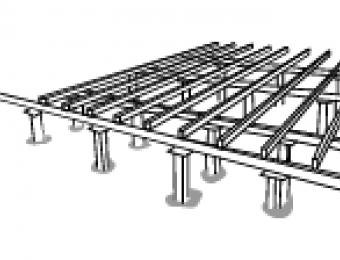
How reactive the soil on your site is will determine how your house will need to be built.
What is soil reactivity?
Soil reactivity refers to how much the soil on the site is likely to move, expand and contract (normally as a result of changing moisture content). This can be a real issue, especially where concrete slab subfloors are concerned, or if you’re planning on building a multi storey house with a bit of weight to it. Reactive soil can easily cause a lot of damage to a house, especially if the house use the wrong type of concrete slab subfloor.What are the soil classifications?
Soil reactivity’s generally graded in terms of the following classifications:| Site classifications based on soil reactivity | |
|---|---|
| Class A | Stable, non-reactive. Most sand and rock sites. Little or no ground movement likely as a result of moisture changes. |
| Class S | Slightly reactive clay sites. May experience slight ground movement as a result of moisture changes. |
| Class M | Moderately reactive clay or silt sites. May experience moderate ground movement as a result of moisture changes. |
| Class H1 | Highly reactive clay sites. May experience a high amount of ground movement as a result of moisture changes. |
| Class H2 | Highly reactive clay sites. May experience very high ground movement as a result of moisture changes. |
| Class E | Extremely reactive sites. May experience extreme amounts of ground movement as a result of moisture changes. |
| Class P | Problem sites. The ability of the soil to evenly bear a load is very poor. Sites may be classified as 'Class P' as a result of mine subsidence, landslip, collapse activity or coastal erosion (e.g. dunes), or soft soils with a lack of suitable bearing. Ground movement as a result of moisture changes may be very severe, and these sites are typically subject to abnormal moisture conditions resulting from things like trees, dams and poor site drainage. If you are building on a Class P site you will need to consult a structural engineer. |
| Classes M-D, H1-D, H2-D and E-D | The 'D' in these classifications refers to 'deep' movements in soil due to deep variances in moisture. These classifications are only found in dry areas (e.g. north of hte Great Dividing range, in places like Stawell, Horsham, Mildura, Bendigo, Shepparton and Wangaratta). |
Geotechnical engineering reports
Very early on in the piece a geotechnical engineer will need to be commissioned to test the site you plan to build on, and will return a report that indicates the physical properties of the soil on your site, the stability of natural slopes, the chemical composition of the soil and various other details. The type of footings or slab subfloor that can be built on your site will depend on how stable the soil is, and for particularly reactive soil, a structural engineer might be needed to ensure that the house will be able to withstand the kind of movement that’s likely on the site.






